Image Gallery: Ancient Silver Playing Cards Discovered
King of Swords
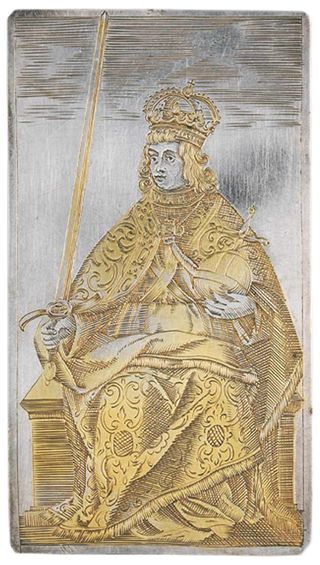
The king of swords, the ruler dressed as a Holy Roman Emperor. Each card is about 3⅜ by 2 inches and is no more than one millimeter thick. Made in Germany in 1616 they were created as works of art rather than for playing.
Read more: 400-Year-Old Playing Cards Reveal Royal Secret
Nine of Swords
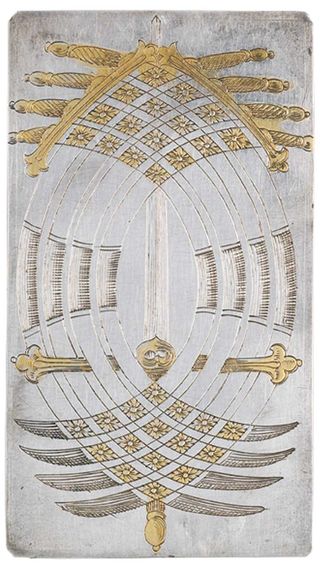
The nine of swords. The cards are divided into four suits - swords, batons, cups and coins. Each suit, in turn, has three face cards -king, knight and knave. There are no jokers.
Cavalier of Batons
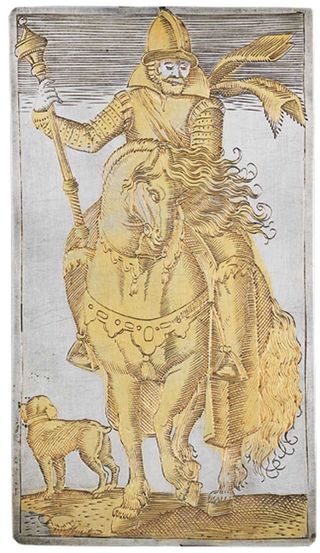
The knight (also known as cavalier) of batons. He appears to have adog beside him. He's dressed in early 17th-century military costume.
Ten of Batons
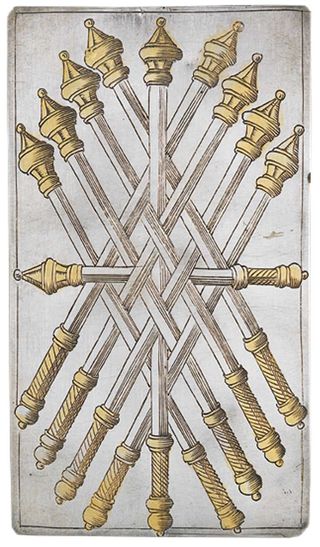
The 10 of batons. Designers of the cards used mercury to make the gold gilding bond with the silver. Mercury is a potentially lethal substance and the process was dangerous.
King of Cups
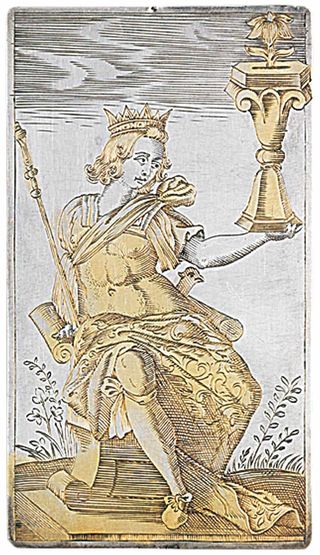
The king of cups. This ruler is dressed in ancient Roman clothing. Each face card shows different depictions of the subjects.
Ace of Coins
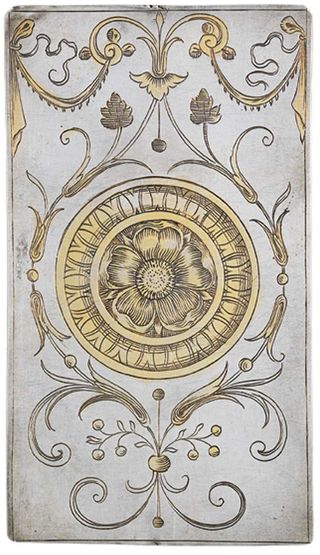
The ace of coins. All four ace cards in the set are highly stylized,this one having a flower at the center of the decoration.
Sign up for the Live Science daily newsletter now
Get the world’s most fascinating discoveries delivered straight to your inbox.
Display cabinet
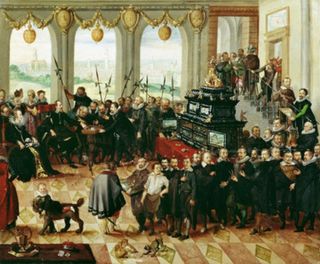
The presentation of the Pommersche Kunstkammer to Duke Philip II of Pomerania. This painting was drawn in 1617 by Anton Mozart and shows a finely crafted collector cabinet (the Kunstkammer) being given to the Duke. This particular cabinet held three sets of silver playing cards among other works of art. It's not known who owned the newly discovered silver card set in the 17th century but it was probably displayed in a cabinet like this.
Royal lineage
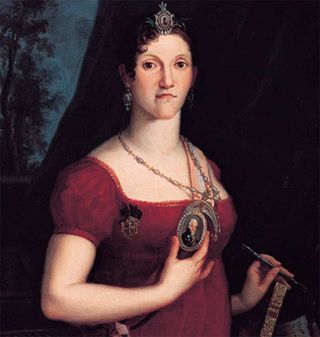
Princess Carlota Joaquina was daughter to a Spanish king and was married to a prince from Portugal. According to a family tradition she possessed the silver playing cards in the early 19th century. When Napoleon's armies invaded Iberia in 1807 she took them with her to Brazil.
Struggle for control

When the princess was in Brazil, Napoleon forced her brother the Spanish king Ferdinand VII to abdicate. Carlota attempted to become queen in his place and gain control of the viceroyalty of Rio de la Plata (shown in blue), then controlled by Spain. She enlisted the help of Felipe Contucci who served as her liaision to leaders in Buenos Aires.
Change in plans
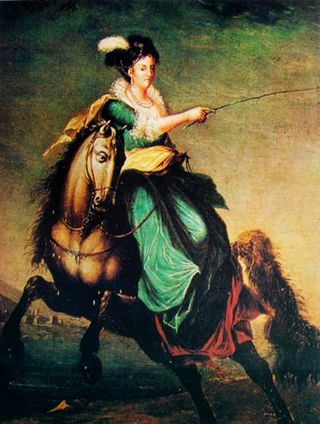
Contucci claimed in November 1808 that 124 of the territory's leading men were ready to support her as queen of a newly independent country. However the British, as well as the surviving Portuguese and Spanish governments, opposed the plan. Ultimately Carlota's ambition of becoming a ruling queen came to nothing. According to the family story Contucci's wife was given the silver cards. This painting shows the princess on an equestrian horse.










